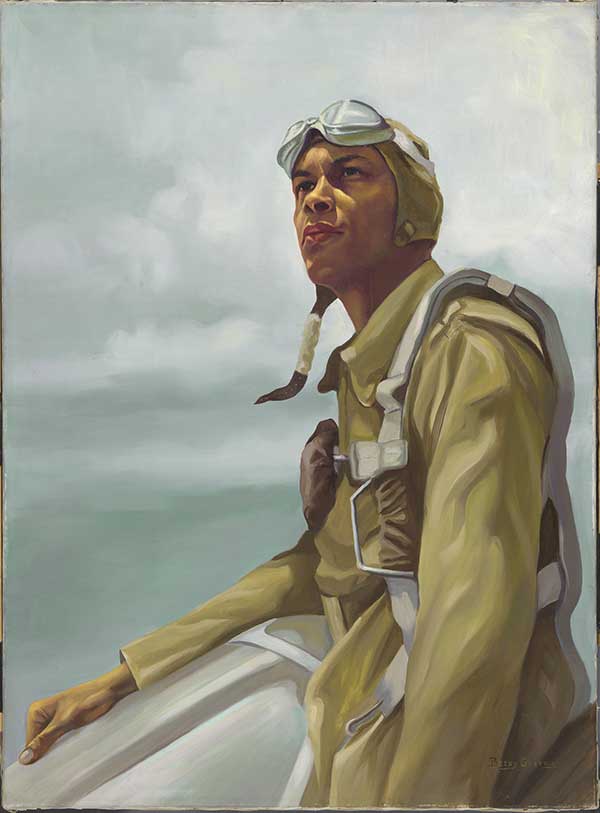William Ayers Campbell (1917-2012)

Gift of the Harmon Foundation
Born at the Tuskegee Institute in Alabama, Cadet William Campbell trained there during World War II at the special facilities established for Black pilots and technicians. He graduated on July 3, 1942, as one of the group that came to be known as the Tuskegee Airmen and flew in Europe with the Ninety-ninth Pursuit Squadron. According to Betsy Graves Reyneau, the artist of this painting, Campbell was the “first [Black] pilot to drop a bomb. He fought at Pantelleria, Sicily, Salerno, Anzio. He flew as much as twelve hours a day during the critical days when it seemed as if the troops at Salerno would be pushed back into the sea. They were saved from complete disaster by the air umbrella of the planes. He was sent home having completed his mission but asked to be sent back immediately as he wished to fight as long as a white or Negro flier still faced the enemy.”
While African Americans have served in every war and conflict in American history, they always faced segregation and discrimination in the armed forces. During World War I, Black men were denied the opportunity to serve as pilots, a rejection that led to two decades of advocacy by African Americans who wanted to train as military aviators. Their efforts yielded rewards when the advent of World War II brought a new demand for trained pilots. A series of legislative directives by the U.S. Congress forced a reluctant Army Air Corps to create a new all-Black unit in 1941. The Tuskegee Institute became the central training ground for African American pilots and technicians. These newly created Tuskegee Airmen (a term that encompassed pilots, navigators, bombardiers, maintenance and support staff, instructors, and all the personnel who kept planes in the air) served their country with distinction while battling the forces of racism both inside and outside of the army.
Learning to Look
Artist Betsy Graves Reyneau intended for this portrait to be symbolic of African American participation and heroism in the war effort. How does she convey the idea of heroism through the choices that she made regarding the setting of the portrait and Campbell’s pose, facial expression, and clothing?
Suggested Activity: Creating a Heroic Portrait
Choose someone you view as a hero or role model and create a symbolic portrait of that person’s heroism. Your sitter can be a historical figure, a contemporary celebrity, or someone that you know personally. As you create your portrait, consider how you can use elements such as setting, pose, clothing, objects, and facial expression to convey why and how your sitter is a hero to you. Option for older students: Research African American contributions to the war effort during World War II (in the men’s and women’s branches of the armed forces, in the defense industries, in other home-front activities, and/or in the area of civil rights advocacy) and choose someone from your research as the sitter for your heroic portrait. After you create your portrait, write a 150–200 word label that explains why your sitter is a hero and how your portrait conveys that heroism.